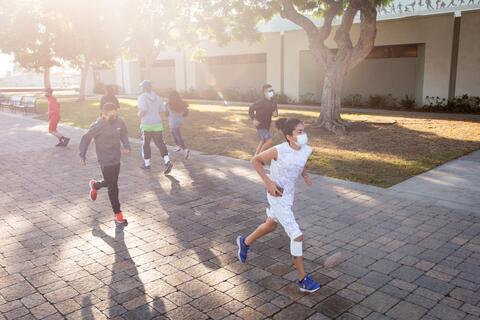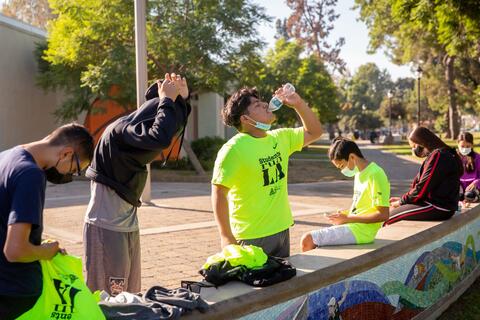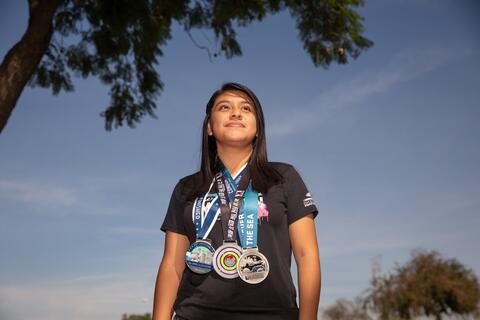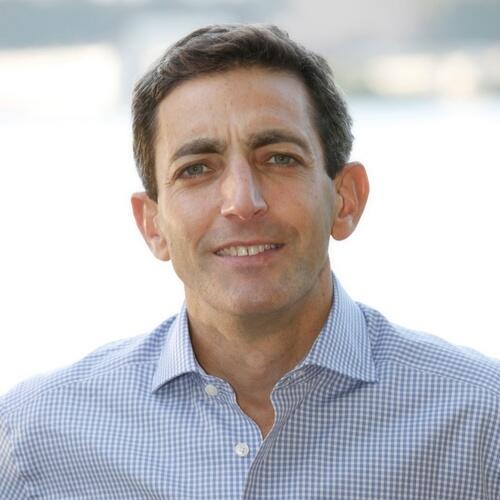
KIPP Corazón Coach Alfredo Chavez handing out a Students Run L.A. shirt. Credit: Allison Zaucha for The New York Times
"Our founding Students Run LA team (SRLA) was featured in The New York Times! SRLA is a program that trains students to complete a marathon. But it’s more than just completing a marathon," explained Alfredo Crossman-Chavez Jr., Athletic Director and Physical Education Teacher at KIPP Corazon Academy Upper School. "You learn what commitment is, what hard work is, you become a family, you create memories, you build bonds, you become a part of a program that will always support you, and you get to say you’ve completed 26.2 miles. I was honored and blessed to get our school into the program. [Our students'] dedication is unmatched!"
Over the past three decades, more than 50,000 students have trained for and completed the Los Angeles Marathon.
By: Matthew Futterman, The New York Times
The Los Angeles Marathon is often overshadowed by larger and more storied marathons. [...]
But the Los Angeles race, which travels from Dodger Stadium to Century City, has accomplished something the major marathons have never attempted.
Over the past three decades, more than 50,000 middle school and high school students, most of them from [systemically] underserved communities, have trained for and completed the race as part of the organization Students Run L.A.
Their accomplishment is remarkable, and their participation could help answer two questions that educators, coaches and doctors have long pondered: Can teenage bodies handle the load of long-distance running, and, if so, can distance running improve academic performance?
Anecdotal evidence to support the relationship between running and academic performance is easy to find around the Los Angeles Marathon. Consider Lupe Conde, a recent graduate of Aspire Ollin University Preparatory Academy in Huntington Park, Calif., who will be running in her fourth Los Angeles Marathon this year.
Conde said she got into marathon running after seeing older girls in the school with marathon medals. She wanted one. So in ninth grade she joined the dozen or so students who train each year with a teacher in the school.

A Students Run L.A. practice session in October [with Coach Chavez] at South Gate Park near Los Angeles. Credit: Allison Zaucha for The New York Times.
It took her eight hours to complete that first marathon. [...]
“I used running as a way to cope and keep me going, not just physically but also mentally,” Conde, 18, said in a recent interview. “With all the work, and the A.P. classes, I used it to help with my mental health. It taught me grit and perseverance.” [...]
Of course, there is a degree of self-selection at play here. It’s not a great leap to say that a student who signs up to train for and run a marathon is probably the kind of goal-oriented person who may be more likely than the average student to meet the requirements for high school graduation.

[KIPP Corazón Academy] middle school students take a break while training for the marathon at South Gate Park. Credit: Allison Zaucha for The New York Times.
“It’s a combination of who the kids are and the training they do,” said Ben Bravo, a special-education teacher in nearby Carson, Calif. “You finish a marathon, something such a small percentage of people do on any weekend, and you know you can accomplish anything you set your mind to.”
That said, marathoning has not traditionally been recommended for teenagers. Conventional wisdom has held that since teenage physiques are still developing, they are not ready to endure the wear and tear of marathon training.
Five years ago, organizers with Students Run L.A. asked Joshua Goldman, a sports medicine physician at U.C.L.A., to work with them. Goldman told the group that its mission was at odds with medical advice. Organizers suggested that the advice was wrong. So Goldman asked if he could study what is perhaps the world’s largest cohort of teenage marathoners.
Last year, Goldman and his researchers published their results. They found that teenage marathoners had an injury rate that was lower than the rate for adults, and that middle school marathoners had a lower rate of injury than high schoolers.
“Our theory is that when you are 13 years old and something hurts, you slow down or stop, but 17-year-olds push through,” Goldman said.
He said training programs like Students Run L.A.’s, which slowly adds mileage over seven months, are the key to preventing injuries. Students usually run races of 3.1, 6.2 and 13.1 miles and complete long training runs before taking on the marathon distance of 26.2 miles.

Lupe Conde, a freshman at Santa Monica College, will run her fourth Los Angeles Marathon in November as a part of a program called Students Run L.A. Credit: Allison Zaucha for The New York Times.
The study led an expert panel for sports medicine to issue a new consensus statement on teenage marathoning last year. The group essentially opposed setting any limits on teenage runners so long as they were supervised.
“If you can encourage a kid to get moving and provide a structure for that kid to grow and develop, then it is very understandable to let them run different events,” said Brian Krabak, a sports medicine physician at the University of Washington, who wrote the new statement.
“It’s important to provide that structure, but that’s true for adults, too.” [...]
But next year is looking neon bright. About 2,700 runners with Students Run L.A. are training for 2022.
The story was originally published in The New York Times.
 About the Author: Matthew Futterman is a veteran sports journalist and the author of two books, “Running to the Edge: A Band of Misfits and the Guru Who Unlocked the Secrets of Speed” and “Players: How Sports Became a Business.” @mattfutterman
About the Author: Matthew Futterman is a veteran sports journalist and the author of two books, “Running to the Edge: A Band of Misfits and the Guru Who Unlocked the Secrets of Speed” and “Players: How Sports Became a Business.” @mattfutterman
A version of this article appears in print on Oct. 25, 2021, Section D, Page 2 of the New York edition with the headline: Proving That Youth Can Run Marathons.
